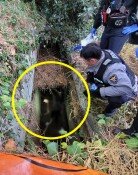What Korea Can Learn From Japan`s Space Program
What Korea Can Learn From Japan`s Space Program
Posted April. 12, 2010 02:53,
A gigantic rocket launch pad 1,000 kilometers away from Tokyo on the southern shore of Tanegashima Island, Kagoshima in Japans southern Kyushu Prefecture represents the past, present and future of Japanese space science technology.
The pad is home to the Tanegashima Space Center, the heart of Japans space development.
The atmosphere of the center Thursday was tense with preparation in full swing for the arrival of a rocket to take the Venus Climate Orbiter, or Akatsuki (Planet-C), to space. Manufactured by Mitsubishi Heavy Industries, the rocket will arrive at the center Saturday.
After a satellite is loaded onto it, the rocket will take off soon with Akatsuki on top. Three satellites including Akatsuki are scheduled for launch by March next year.
Sprawled over nine square kilometers, the center is smaller than Kennedy Space Center (404 square kilometers) in Florida but is almost double the size of Naro Space Center (4.95 square kilometers) in Korea.
Tanegashima houses two large rocket launch pads, rocket assembly plant, control center and laboratory complexes. It is also home to 400 people, including 60 employees of the Japan Aerospace Exploration Agency and workers for private companies such as Mitsubishi Heavy Industries, the rocket manufacturer.
○ Mecca of Japans space technology
Though Japan began rocket launch experiments in 1954, 1968 is when its space industry really took off after the launch of a rocket from the Tanegashima Space Center for the first time.
Forty-seven satellites have been launched at the center, 44 successful. The center has a record of more than 100 launches if including experimental rockets that had no satellites. The center is not only a source of envy but also a strong rival to Koreas Naro Space Center, which failed to launch 100-kilogram scientific research satellite in August last year.
Japan has had a strong ambition to secure independent space technology. For example, it developed the small liquid fuel rocket H-2 wholly with Japanese technology at a cost of 19 billion Japanese yen (204 million U.S. dollars), almost double had external technology been used. After building a rocket purely with independent technology, Japan began to use imported parts to save costs. In 2001, it launched the large liquid fuel rocket H-2A costing nine billion yen (96.6 million dollars). In 2007, Tanegashima established itself as the mecca of Japanese space technology with the launch of the countrys first lunar explorer Kaguya aboard H-2A Launch Vehicle No. 13.
Japans next target is to launch a manned space shuttle that returns to the atmosphere. Recent research has dealt with separation of the part holding astronauts from the rocket and destroying the remaining parts. Tanegashima center head Norio Sakazume, a rocket engine expert, said, As long as we have the commitment, we can launch a manned space shuttle within 10 years.
○ No fear of failure
In September 1975, Japan launched N-1 Launch Vehicle No.1, the countrys second-stage rocket atop a first-stage rocket made with U.S. technology from the Tanegashima center. In simple calculation, Korea will be behind 35 years in space technology relative to Japan if Korea succeeds in the re-launch of the KSLV-1 in June this year.
On Koreas launch failure last year, Sakazume said, Failure is the mother of success. Even Russia, which has had 1,700 successful rocket launches, succeeded in just seven of 17 launches in the first year it fired the Soyuz. Failure is common in the initial stage of rocket launches. What matters is how you overcome them.
Japan also experienced many failures before it joined the ranks of global space powerhouses. For example, it launched an N-1 rocket at the Tanegashima center in 1975 after four consecutive failures in the late 1960s. Sakazume recalled that Japans establishment in space technology development such as space docking technology, which is lauded as the worlds best, was also earned after several failures.
Now an advanced space nation after trial and error, Japan is now shifting its focus to the world, concentrating its efforts on commercializing rocket launches. Its first project is Koreas multi-purpose satellite Arirang-3, which will be launched from the Tanegashima center for the first time as a foreign satellite next year.
Kim Gyeong-min, a professor at Hanyang University in Seoul who accompanied The Dong-A Ilbo to the center as a space technology expert, said, Japan is a leading nation in space science development with technology that can launch objects as heavy as 18 tons into space using H-2A rockets. Korea failed to launch a 100-kilogram satellite into space last year, and should learn from Japans history of space technology development, which was enabled by cooperation between the private and public sectors.
jkmas@donga.com






![[단독]정부, 석유화학 이어 배터리 구조조정 시사](https://dimg.donga.com/c/138/175/90/1/wps/NEWS/IMAGE/2026/01/15/133159957.1.jpg)
